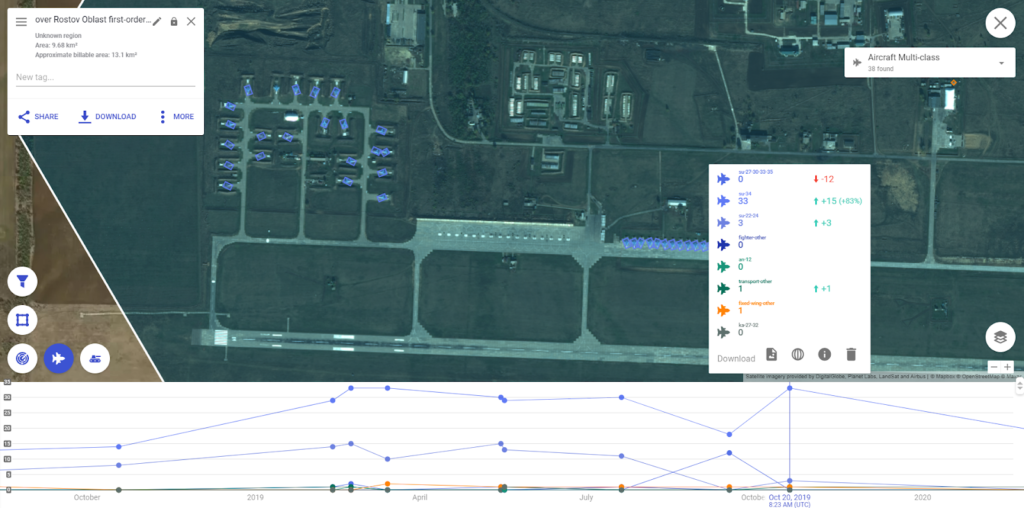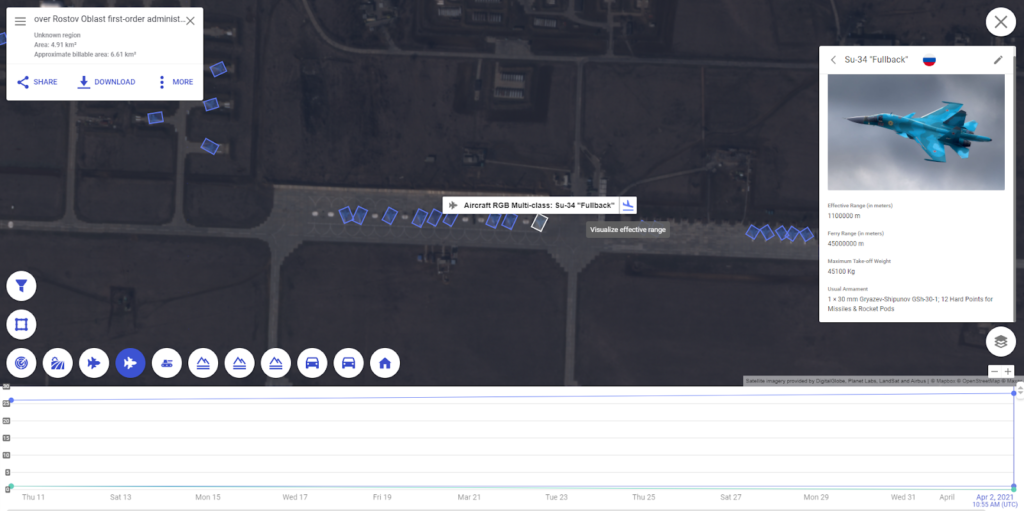Case Study from the Morozovsk Air Base
Recently, there has been a significant international focus on the increased activity of Russian armed forces in the vicinity of Ukraine. The activity consisted mostly of mass troops movement and deployment of various platforms during alleged military exercises.
At SpaceKnow, we approach our GEOINT services as a complex solution including not only top tier algorithmic solutions, enhanced suite of features and tools, but also involvement of seasoned defense and security experts who are capable of providing a much needed context to the overall operational picture.
While it appears that the recent maneuvers of Russian forces were an intended show of force with the aim to demonstrate the readiness and raw power amidst ongoing crisis, some of the media coverage did not provide the full context in their stories, resulting in a somewhat confusing interpretation of the situation.
Reports about worrisome activity and the amount of Su-34 “Fullback” striker-bomber aircraft at the Morozovsk Air Base prompted us to conduct an analysis of objects detected in the past at this particular site of interest. Using open source research and our internal expertise, we quickly established that this air base is home to the 559th Bomber Aviation Regiment, part of the 1st Guards Stalingrad Svirskaya Composite Air Division within the 4th Red Banner Air and Air Defence Army of the South Military District. The verdict: Our analysis confirmed that Morozovsk Air Base is home to approximately 36 aircraft (3 squadrons), and is guarded by a dedicated S-300/400 air defense system located nearby.
When looking at and analyzing both current and archived data from Maxar and Planet satellites, it is evident that the positioning of the aircraft at the base has been more or less consistent for the past 4 years. While sometimes the majority of the aircraft are parked at their stands, it’s not uncommon to see 10 – 15 Fullbacks ready at the flight line. Therefore, the flight-ready Fullbacks seen in the image below taken in April 2021 is not a clear indication of an unusual or increased activity on its own. This simply means that for this particular air base, this is largely a “life as usual” scenario (and what this means, we leave up to you to assess)


To provide even more insights, this analysis can be further expanded by aggregating additional data sources into the equation. However, as we’ve shown here, just by analyzing archived imagery to get statistical counts and visual inspection of the location, one can easily, reliably and very very quickly draw precise conclusions about the area of interest. This is one of the most valuable features of the SpaceKnow Defense & Intelligence suite – the provision of significant computational power and state-of-art algorithms along with a wide range of tools to provide an in-depth analysis and actionable insights over vast areas of interest to the analyst. This way, high-value analysts can focus their cognitive capacity to support the critical decision making process at both the operation and strategic level.
For further details and information about our Defense & Intelligence solutions do not hesitate to reach out and contact us directly at info@spaceknow.com.
Written by Jakub Broz on behalf of SpaceKnow.